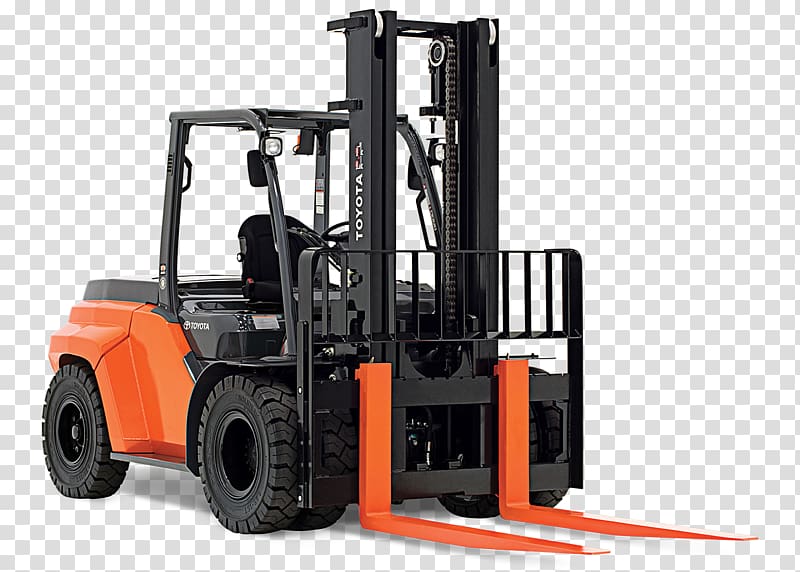Maximize Uptime: Essential Tips for Toyota Forklift Service and Repair
Maximize Uptime: Essential Tips for Toyota Forklift Service and Repair
Blog Article

Maintaining a fleet of Toyota forklifts is crucial for businesses that rely on heavy lifting and warehouse operations. These machines are known for their durability and efficiency, but like any machinery, they require regular service and repair to ensure optimal performance. Understanding how to maximize uptime through effective maintenance strategies can save your company time, money, and resources.
Toyota Forklift Online Manual
In this article, we will explore essential tips for Toyota forklift service and repair. From routine inspections to addressing common issues, knowing how to properly care for your equipment will help you avoid unexpected breakdowns and extend the lifespan of your forklifts. Whether you have a single unit or a large fleet, these insights will guide you in keeping your operations running smoothly.
Understanding Toyota Forklift Maintenance
Proper maintenance is crucial for ensuring the longevity and efficiency of Toyota forklifts. Routine checks and servicing can prevent unexpected breakdowns and downtime, which can be costly for any operation. By adhering to a regular maintenance schedule, you can keep your forklifts in optimal condition and extend their service life.
One of the key aspects of Toyota forklift service repair includes daily inspections, such as checking fluid levels, tire pressure, and overall functionality. Operators should be trained to perform these checks and report any irregularities immediately. Identifying potential issues early can prevent minor problems from escalating into major repairs, thereby enhancing overall productivity.
Additionally, adhering to the manufacturer's recommended service intervals is vital. This includes using genuine Toyota parts for replacements, as they are specifically designed for optimal performance. Regular professional servicing not only keeps the equipment running smoothly but also ensures compliance with safety standards, ultimately contributing to a safer work environment.
Common Toyota Forklift Issues
Toyota forklifts, while known for their reliability, can experience some common issues over time. One frequent problem is hydraulic system failure, which can manifest as leaks or reduced lifting power. Operators may notice that the forklift struggles to lift loads or that there is a visible hydraulic fluid leak around the hoses or cylinders. Regular inspection and maintenance of the hydraulic system are essential to prevent more severe damage and ensure optimal performance.
Another common issue is electrical system malfunctions. Operators might face difficulties starting the forklift or notice erratic behavior of the controls. This may be due to battery problems, faulty wiring, or issues with the electrical components like the ignition system. Identifying these issues early through routine checks can help avoid unexpected downtime and costly repairs, allowing for smoother operations.
Transmission issues can also affect the performance of Toyota forklifts. Problems like slipping gears or difficulty shifting can indicate wear and tear in the transmission system. If left unaddressed, these issues could lead to complete transmission failure, impacting productivity. Regular servicing, including checking fluid levels and inspecting the transmission components, is crucial for maintaining the forklift's reliability.
Service Schedule Best Practices
Establishing a consistent service schedule for your Toyota forklift is essential for maintaining its performance and longevity. Begin by consulting the manufacturer's guidelines for service intervals, which typically outline both routine maintenance tasks and inspections. Ensure that your schedule aligns with the forklift's usage patterns. For instance, more frequent servicing may be necessary if the forklift operates in a demanding environment or for extended hours, while lighter use may allow for longer intervals between services.
Regular inspections should be part of your service schedule to catch potential issues before they escalate. Make it a practice to check vital components, such as fluids, tires, and brakes, in addition to routine servicing tasks like oil changes. Documenting these inspections will help you track the forklift's condition over time and serve as a valuable reference for future maintenance. Creating a comprehensive checklist for each service visit can streamline this process and ensure that no critical steps are overlooked.
Don’t forget the importance of engaging qualified technicians for service and repairs. Training your staff on basic troubleshooting and routine checks can help minimize downtime, but complex repairs should always be handled by certified professionals. This not only ensures that the work is done correctly but also helps maintain the warranty on your Toyota forklift. By adhering to these best practices, you can maximize uptime and enhance the overall efficiency of your operations.
Choosing the Right Repair Service
Selecting the appropriate repair service for your Toyota forklift is crucial for maintaining optimal performance and minimizing downtime. Start by looking for a service provider with a solid reputation and extensive experience in handling Toyota forklifts. Check online reviews and seek recommendations from other businesses in your industry to ensure you choose a trusted partner.
It is also important to assess the qualifications and certifications of the technicians at the repair service. A skilled technician who specializes in Toyota forklift service repair will be familiar with the specific models and common issues, which can significantly enhance the quality of the repairs. Verify whether the service offers regular training for its staff to keep up with the latest advancements in forklift technology.
Lastly, consider the availability of parts and the overall service offerings. A repair service that maintains a stock of genuine Toyota parts can expedite repairs and ensure that your forklift is operating with quality components. Additionally, inquire about their diagnostic capabilities and service warranties, as these factors can contribute to long-term reliability and customer satisfaction.
Report this page